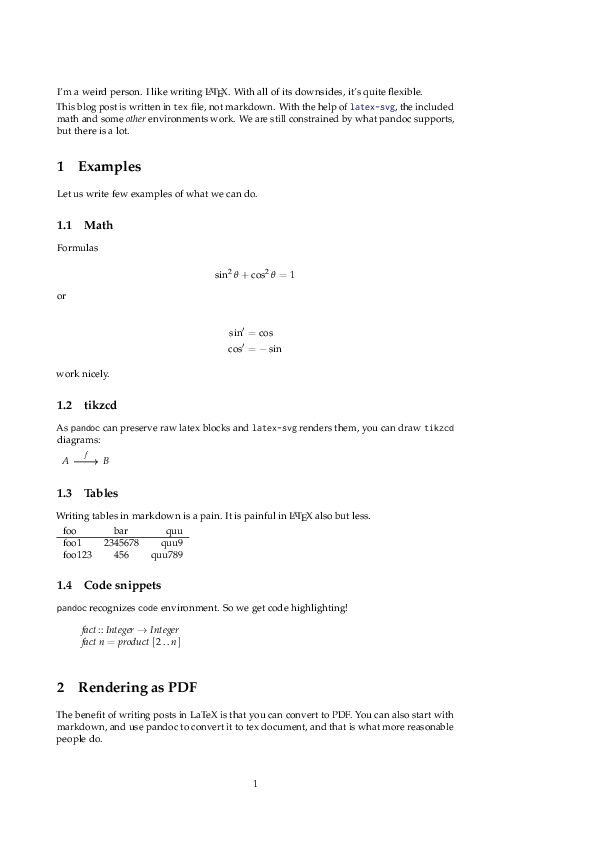Perhaps you’ve noticed that the standard Markdown library doesn’t render LaTex. Turn’s out that the workaround is really simple. All you need is the MathJax plugin for kramdown. MathJax is essentially a JavaScript PNG renderer that turn your LaTex Snippets into high qualit PNG images.
StackEdit renders mathematics from LaTeX expressions inside your markdown file, as you would do on Stack Exchange. StackEdit enables you to write sequence diagrams and flow charts using a simple syntax. StackEdit can render musical scores using the ABC notation.
- Nearly all Markdown applications support the basic syntax outlined in John Gruber’s original design document. There are minor variations and discrepancies between Markdown processors — those are noted inline wherever possible. To create a heading, add number signs (#) in front of a word or phrase. The number of number signs you.
- R Markdown documents are converted to PDF by first converting to a TeX file and then calling the LaTeX engine to convert to PDF. By default, this TeX file is removed, however if you want to keep it (e.g., for an article submission), you can specify the keeptex option.
- LaTex LaTeX is a typesetting system that is used in the publication of technical and scientific documents. There are two modes for inserting mathematical expressions using LaTeX—inline and display. This is similar to the two ways to use markdown for code.

To get it up and running, two steps must be taken:
- Ensure you are running on a compatible markdown processing engine. If you use Jekyll, you’re good to go since it runs on kramdown, which support MathJax.
- You need to load the plugin. This is done by inserting a code snippet (below) into relevant page layouts that you have in the
_layoutsfolder:

So for instance, suppose you have post.html layout document. Then just insert the above code to enable LaTex rendering on any post that has layout: post. Now, if you have several layouts that all load a base layout, then you can insert the code in the base layout script to automatically load it in all its dependencies.
Markdown Latex Package
For inline LaTex, MathJax looks for the ( ... ) delimiter. Hence to write ( a^2 = b^2 ) as an inline equation, use ( a^2 = b^2 ). For displayed equations, the delimiter is either [ ... ]. And so to display [ a^2 = b^2 + c^2 ] we would write [ a^2 = b^2 + c^2 ].
Now, to get serious, we need to configure MathJax to behave like a full-body LaTex renderer. To to this, we work with the MathJax.Hub.Congig API. There are plenty of configuration options allowing you a very high degree o flexibility, but it can require quite a bit of work as it has to be coded as javascript objections. Luckily some standard options are preconfigured, such as loading the AMSMAth and AMSSymbols packages. Here, we load these packages, turn equation numbering on, and define the $ ... $ as an inline equation environment (to get an actual $ sign, use $). In the same file that you added the above script, paste in the below code underneath:
Now you’re set up for fancy, numbered equations:
Markdown Latex Math

You can easily reference and equation like eqref{label} with the standard eqref{label} syntax (note - no delimiters). To write the equations. The equation itself is render by typing:
Markdown Latex Word
$$ begin{equation} label{label} ... end{equation} $$
And that’s it! See the documentation for more information on how to tweak MathJax.
